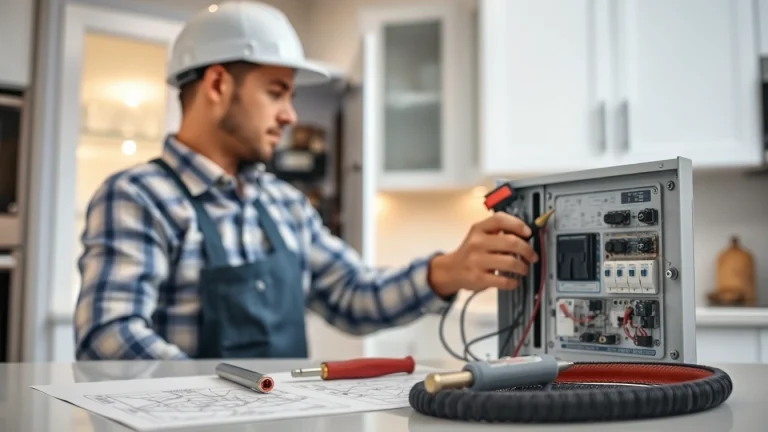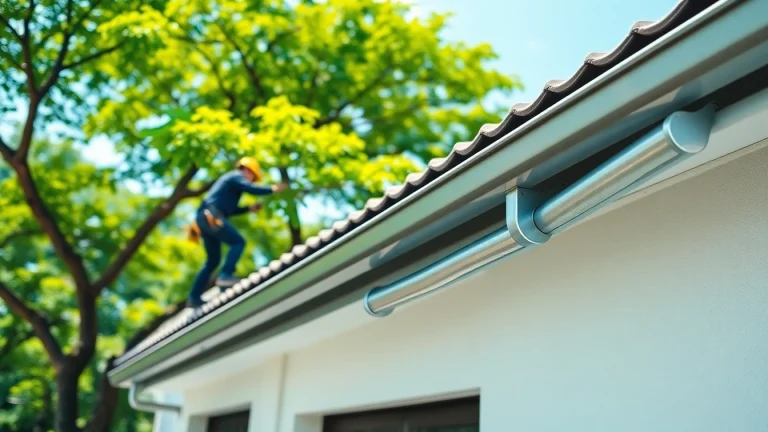
Understanding the Importance and Process of Electrical Panel Upgrade
What is an Electrical Panel Upgrade?
Definition and Purpose
An electrical panel, also known as a breaker panel or service panel, is a critical component of your home’s electrical system. It serves as the main distribution point for electrical circuits within your home, directing electricity from your utility supply to different parts of your home and protecting against overloads or short circuits through circuit breakers. An Electrical Panel Upgrade involves replacing an outdated or inadequate panel to improve electrical safety and accommodate increased power demands from modern appliances and technologies.
Signs You Need an Upgrade
Recognizing when an upgrade is necessary is vital for maintaining safety and efficiency in your home. Certain signs can indicate it’s time for an upgrade:
- Frequent Tripping of Circuit Breakers: If your breakers trip often, it may indicate that your panel cannot handle the electrical load required by your devices.
- Buzzing or Flickering Lights: Lights that flicker or buzz may suggest that your electrical panel is in distress or doesn’t provide a stable power supply.
- Burning Smells or Physical Damage: Any signs of burning smells, scorch marks, or melted components in the panel suggest immediate attention is needed.
- Age of the Panel: If your electrical panel is over 25 to 30 years old, it may not meet today’s electrical code requirements or the demands of modern appliances.
- Upgrading Electrical Service: If you plan to add significant electrical load—such as electric vehicle charging stations or larger HVAC systems—an upgrade might be necessary.
Benefits of Electrical Panel Upgrade
An electrical panel upgrade comes with multiple benefits, ranging from enhanced safety to increased property value:
- Increased Capacity: Upgrading to a higher amperage (200 amps is common in modern homes) allows for greater power distribution, accommodating more appliances and devices.
- Improved Safety: Newer panels have enhanced safety features, reducing the risks of electrical fires caused by overloading or faulty wiring.
- Better Reliability: Modern panels are more reliable, ensuring a consistent power supply for all your home’s electrical needs.
- Increased Home Value: Real estate appraisals often favor upgraded electrical systems, potentially raising your property’s market value.
- Compliance with Code: Upgrading ensures that your electrical system meets local building codes, which can be crucial for insurance and resale.
How to Determine When You Need an Electrical Panel Upgrade
Common Indicators for Upgrade
In addition to the signs mentioned earlier, consider the following scenarios as indicators for an upgrade:
- If your home has undergone significant renovations or additional square footage.
- Installation of hardwired appliances, such as electric ovens, water heaters, or HVAC systems that require more power.
- Changes in your lifestyle that increase electricity use, such as starting a home-based business that operates heavy machinery.
Assessment Checklist
Before proceeding with an upgrade, conduct a thorough assessment:
- Age of existing panel and fuse box.
- Current amperage rating and whether it matches your home’s demand.
- Condition of wiring connected to the panel—look for fraying, discoloration, or corrosion.
- How many devices and appliances you are currently using compared to what you plan to add in the future.
Consulting a Professional Electrician
While self-assessment is beneficial, engaging a licensed electrician is crucial for a professional evaluation of your electrical panel. They can check existing wiring, recommend necessary upgrades, and ensure compliance with local codes and regulations. This consultation is a wise investment toward the safety and functionality of your electrical system.
Cost Factors Involved in an Electrical Panel Upgrade
Average Costs and Variables
The cost of an electrical panel upgrade can vary significantly, influenced by several factors:
- Panel Size: Upgrading to a larger panel, such as from 100 amps to 200 amps, generally costs more.
- Labor Costs: Electrician rates differ by region. Make sure to factor in approximately $50 to $120 per hour.
- Permitting Costs: Local jurisdictions may require permits for electrical work, which can add to the overall price.
- Potential Additional Work: Adjacent work such as rewiring or upgrading the service drop might be necessary.
Potential Savings and Financing Options
Upgrading your electrical panel is not only an essential safety measure but can also lead to long-term savings. By reducing energy costs due to improved efficiency and safety, homeowners often recoup their investment over time. Additionally, some homeowners qualify for financing options that allow them to spread the cost over manageable monthly payments.
Tax Credits and Rebates for Upgrade
Homeowners may access tax credits and rebates for electrical panel upgrades. These incentives vary by location and eligibility criteria, often tied to energy efficiency improvements or renewable energy adoption. It’s beneficial to research available programs in your area as these can significantly offset costs.
Step-by-Step Guide to Electrical Panel Upgrade
Preparing for the Upgrade
Preparation is key. Start by assessing your current electrical needs and researching reputable electricians in your area. Obtain multiple quotes to gauge the market rate. Make sure to check for online reviews and any relevant licensing to ensure quality.
Execution Process
Once you’ve chosen an electrician, the upgrade will typically follow these steps:
- Power Disconnection: The power supply will be turned off, either temporarily or permanently, depending on the scope of the work.
- Panel Replacement: Remove the old panel and install the new one according to the power supply requirements.
- Wiring Upgrade: All wires must be reconnected or upgraded accordingly to ensure safe power distribution.
- Testing: The electrician will conduct tests to ensure the panel works properly and safely.
Post-Upgrade Considerations and Inspections
Following the upgrade, ensure that the work is inspected by a local building authority to confirm adherence to safety standards. It’s also essential to monitor the panel for any irregular behavior or issues, especially within the first few months after the upgrade.
Long-Term Benefits of an Electrical Panel Upgrade
Enhanced Safety and Efficiency
One of the primary benefits of upgrading your electrical panel is increased safety. Modern panels have improved circuit breakers and surge protectors that mitigate the risk of electrical fires or system failures. Efficiency is increased as newer systems use energy more effectively, leading to savings on utility bills.
Increased Home Value and Functionality
Homes with upgraded electrical systems typically command a higher resale value. Potential buyers are reassured by the safety and reliability of a new electrical panel, making your home more appealing in a competitive market.
Recommendations for Future Upgrades
To maintain an efficient electrical system, consider scheduling regular maintenance every few years. This can involve checking the panel, updating circuit breakers, and ensuring all connections remain snug. Additionally, always stay informed about technological advancements in electrical systems, as newer solutions may offer enhanced performance or energy savings.


